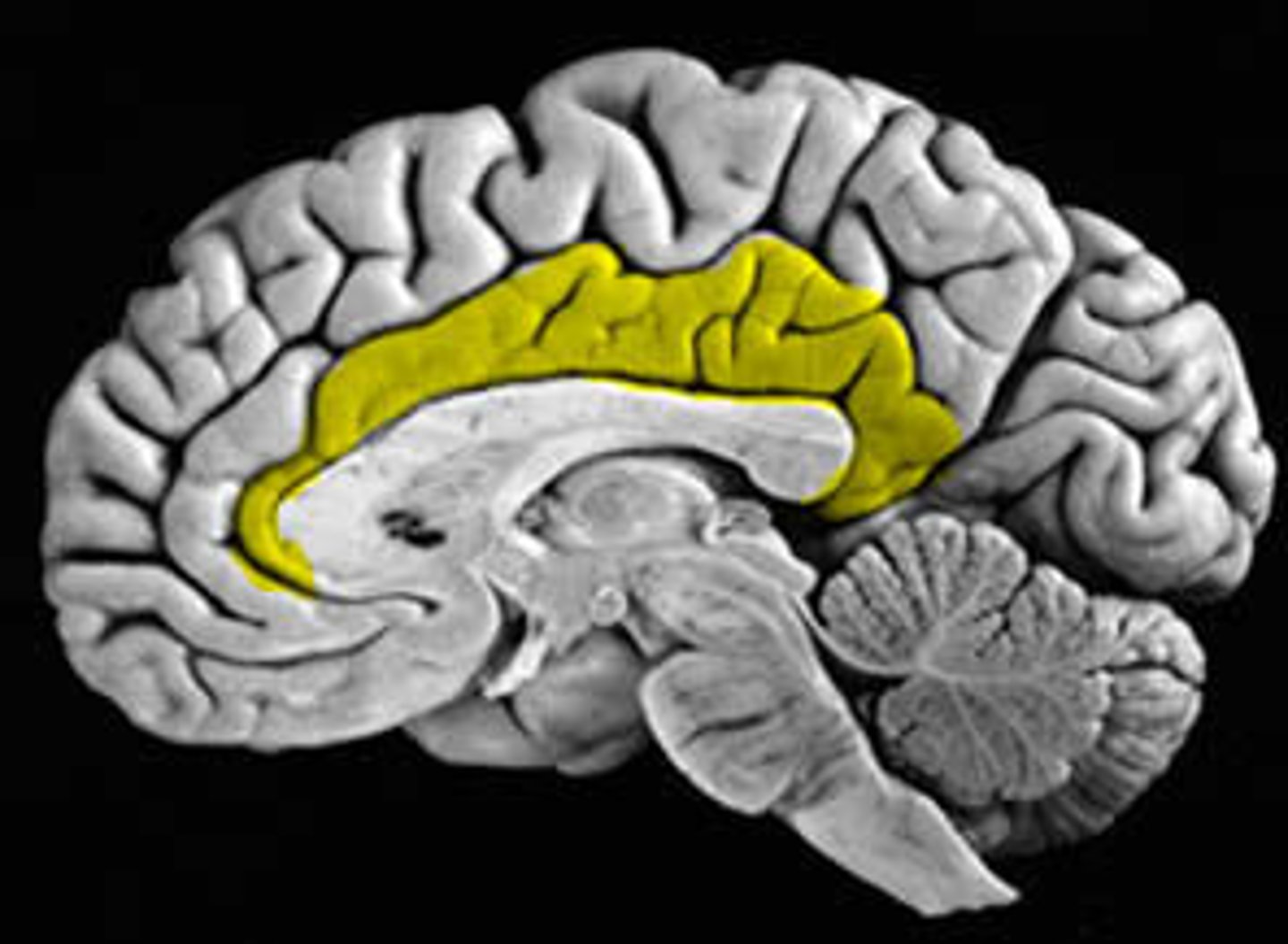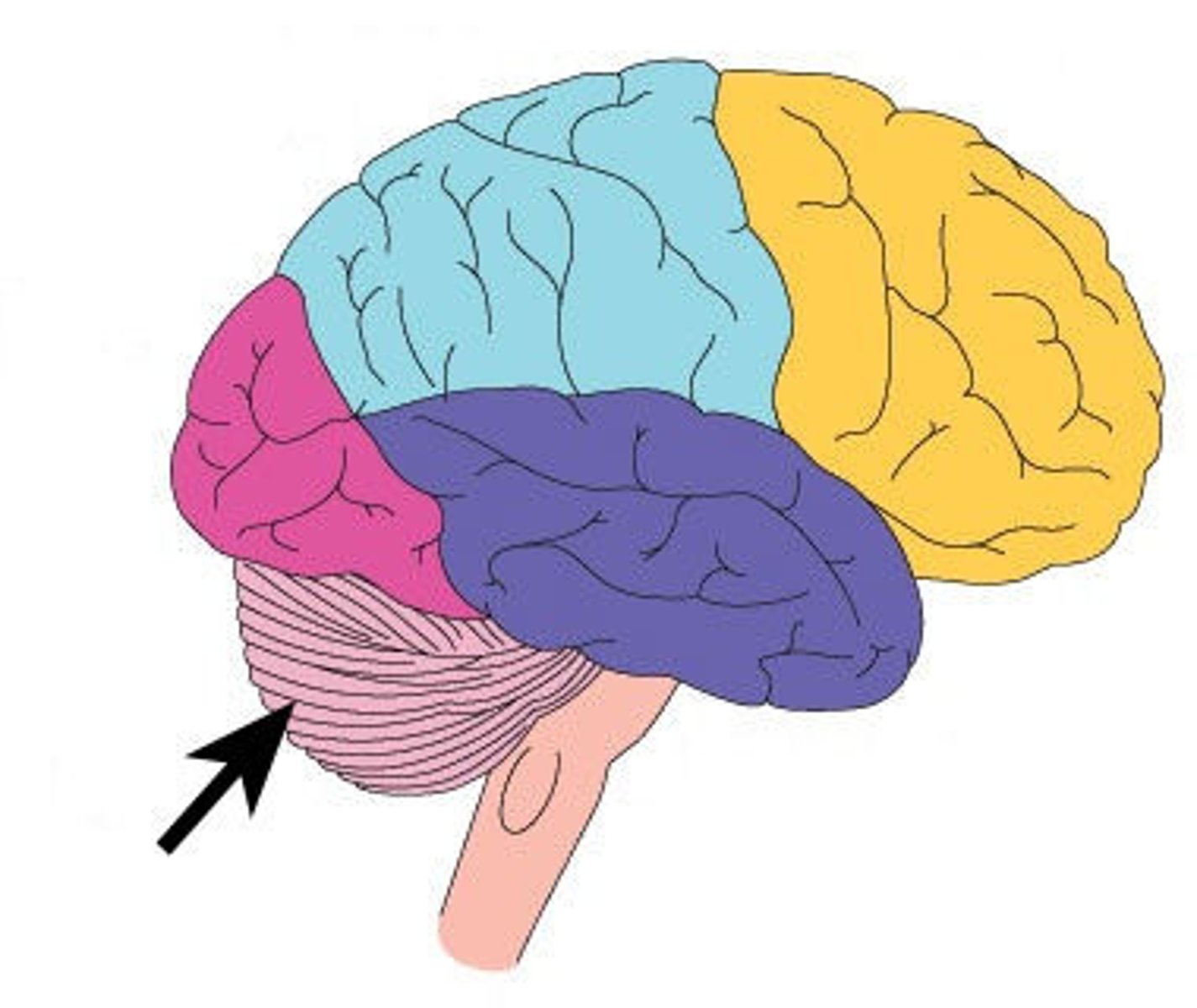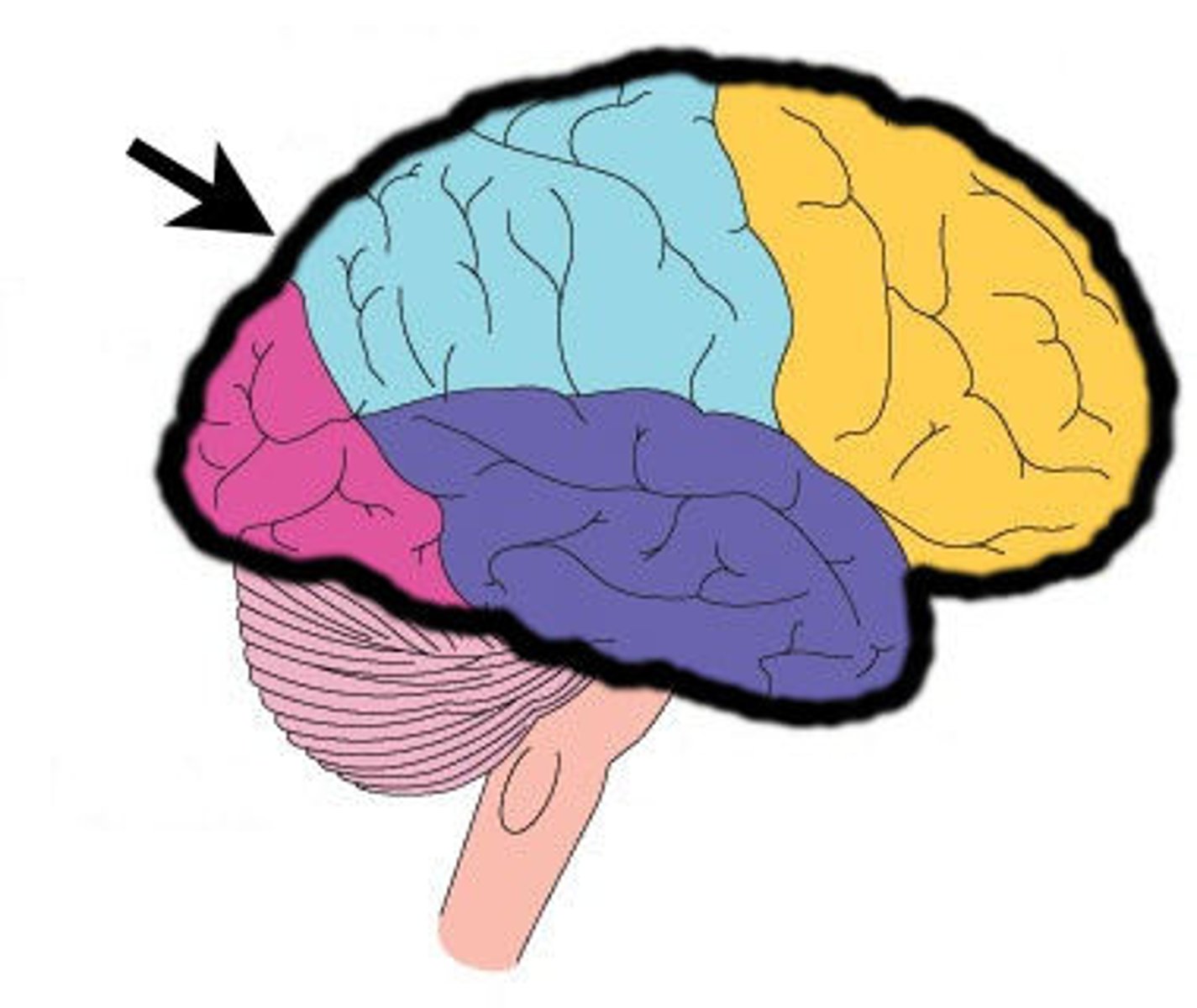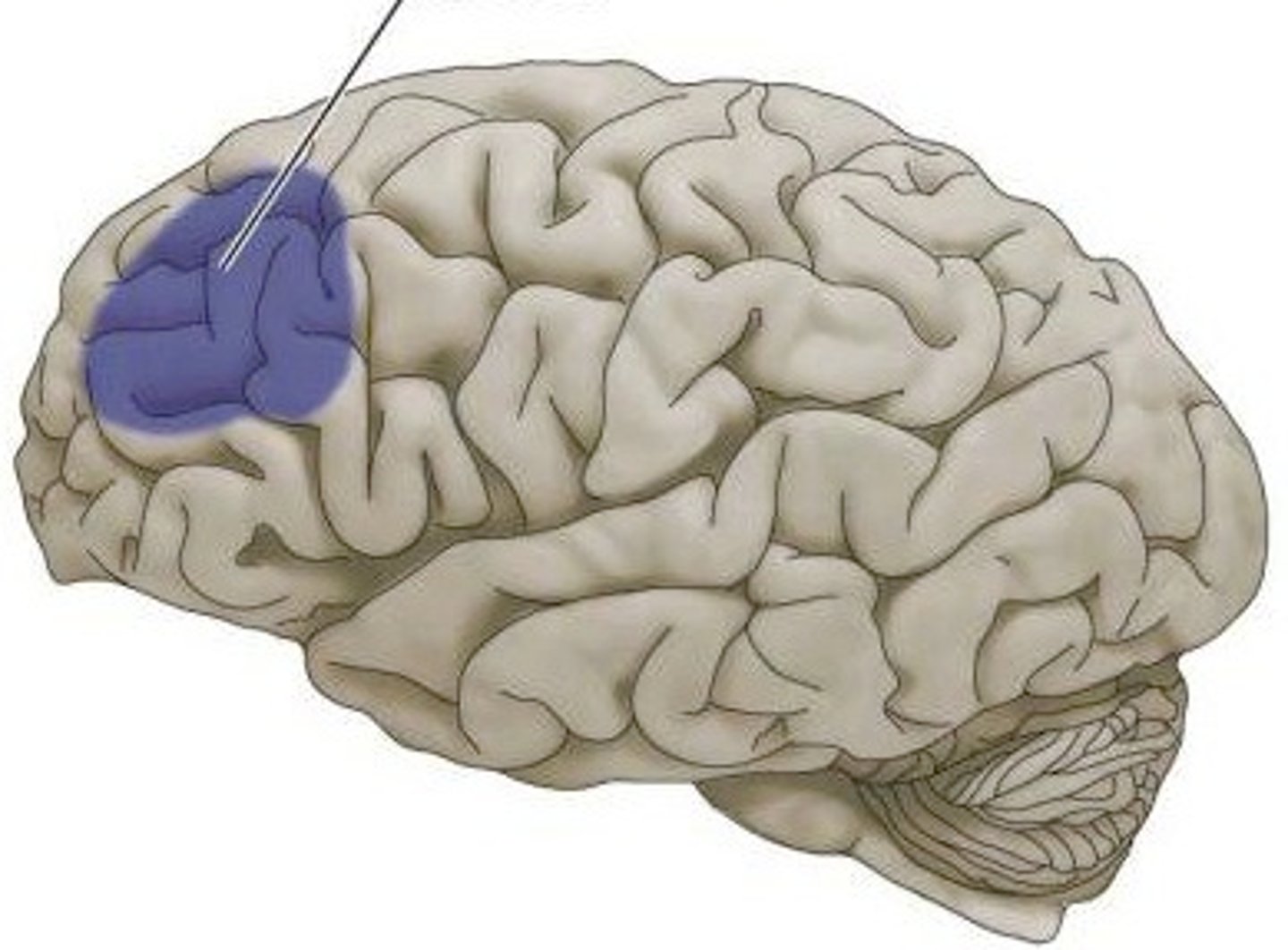Learners and Learning Science
1/79
There's no tags or description
Looks like no tags are added yet.
Name | Mastery | Learn | Test | Matching | Spaced |
|---|
No study sessions yet.
80 Terms
Brainstem
part of the brain that connects to the spinal cord; oversees important jobs like keeping the heart beating regularly, controlling breathing, managing blood flow, and controlling automatic actions like sneezing and swallowing

Limbic System
deep in the brain, it is like an emotional control center helping handle feelings like happiness, fear, and sadness

Cerebellum
located at the back of the head, the "little brain" helps control voluntary muscle movements, posture, and balance

Cerebrum
the front part of the brain responsible for controlling movement, body temperature, and thinking skills like speaking, problem-solving, and decision-making; it also handles sensory tasks like seeing, hearing, and feeling touch

Prefrontal Cortex
plays a crucial role in decision-making, impulse control, and emotional regulation

Encoding
the initial processing of information, converting sensory input into a form that the brain can store and use
Storage
involves retaining encoded information over time
Feedback
provides information about performance, guiding future actions to refine learning strategies
Metacognition
the awareness and understanding of one's thinking processes to monitor and regulate learning
Neuroplasticity
recognizes and celebrates diversity in neural functioning and cognitive styles
Neurodiversity
recognizes and celebrates diversity in neural functioning and cognitive styles
Cognitive style
an individual's typical or habitual way of problem-solving, thinking, perceiving, and remembering
cognitive rigidity
cognitive abilities become rigid and fixed as people age
embodied mind perspective
connection between the body, mind, and environment
Humanism
nurturing students' overall well-being, self-esteem, and sense of belonging
sensorimotor
Infants (0-2 years old) explore through senses and actions, developing an understanding of object permanence and laying cognitive foundations
object permanence
the understanding that something still exists even though it cannot be seen or heard
trust versus mistrust
Infants learn to rely on caregivers for their basic needs, fostering trust—while inconsistency in meeting these needs can lead to mistrust, suspicion, and anxiety about their environment.
autonomy versus shame/doubt
The shame and doubt stage involves a child's journey toward independence and decision-making
sensory exploration
involves activities that engage the senses—touch, sight, hearing, smell, and taste—helping children explore and understand the world around them
fine motor skills
involve tiny muscles working with the brain and nervous system to control movements in areas like the hands, fingers, lips, tongue, and eyes
initiative versus guilt stage
Children between ages three and six display increased assertiveness by taking the lead in play and engaging in social interactions more actively
preoperational stage
children between the ages of two and seven years old think symbolically, using symbols to represent words, objects, images, individuals, and concepts, enabling the capacity to mimic behavior through imitation
egocentric
demonstrating a cognitive inclination where individuals find it challenging to acknowledge perspectives beyond their own
scaffolding
when the teacher breaks down complex concepts into small, more manageable steps helping children along the way
conservation
understanding that certain physical attributes of objects—such as quantity, mass, volume, and number—remain constant even when their appearance or arrangement changes
industry versus inferiority stage
Children between the ages 5 and 12 develop a growing sense of competence and accomplishment as they develop a greater understanding of their capabilities and limitations
concrete operational stage
In children between ages 7 and 11, thinking becomes more logical, organized, and systematic
reversibility
to mentally undo actions or operations; allows individuals to understand that certain processes can be reversed to return to their original state
classification
to categorize objects, events, or concepts based on common attributes or characteristics, enabling children to organize and make sense of their environment
puberty
typically occurs between ages 12 and 17; changes such as the development of secondary sexual characteristics, growth spurts, and alterations in body composition
identity versus role confusion stage
Adolescents between the ages of 12-17 engage in the exploration and formation of personal identity, including values, beliefs, and aspirations
formal operational stage
In adolescents between ages 12 and 17, thinking becomes more abstract, complex, and systematic
behaviorism
sheds light on how external stimuli shape behavior, emphasizing the focus on observable behaviors rather than internal mental processes
classical conditioning
illustrates how associations between stimuli can lead to learned responses
operant conditioning
demonstrates how behaviors are strengthened or weakened
reinforcement
increases the likelihood of a behavior being repeated
punishment
decreases the likelihood of a behavior reoccurring
direct instruction
a teacher-led traditional behaviorist teaching strategy
cognitivism
seeks to understand the internal processes involved in learning, such as perception, memory, problem-solving, and decision-making
mental schemas
cognitive frameworks that help people organize and interpret information
Bloom's revised taxonomy
a framework that categorizes educational objectives into six levels of cognitive complexity: remembering, understanding, applying, analyzing, evaluating, and creating
elaboration
the addition of details
information processing theory
a key component of cognitivism that focuses on understanding the mental processes involved in learning and cognition
constructivism
a prominent theory in education combining cognitive and social elements emphasizing active learning, student-centered instruction, and the construction of knowledge through personal experiences and interactions
self-directed learning
taking self-directed control of learning, setting goals, finding resources, and solving problems independently
discovery learning
learning by exploring and independently resolving challenges, using curiosity and problem-solving skills to discover new ideas and concepts
zone of proximal development (ZPD)
the gap between what a learner can accomplish independently and what they can achieve with guidance and support
more knowledgeable other (MKO)
the teacher or a peer; a person who possesses more knowledge or expertise than the learner and provides assistance and guidance within the ZPD
social constructivism
underscores the interplay between individual cognition and social factors in shaping learning; complements the emphasis on social interaction by highlighting the role of observational learning and modeling in knowledge acquisition
acquisition
learning new information by actively paying attention and engaging with the material
consolidation
organizing and reinforcing new information by connect it to what you already know and practicing it to better remember it
short-term memory (STM)
a mental space that temporarily holds a small amount of information for a short time, usually a few seconds to a minute
long-term memory (LTM)
the storage of information for a long time, including knowledge, skills, and experiences
neuroscience
the study of the brain and nervous system
cognition
thinking activities such as remembering, understanding, problem-solving, and decision-making, including how people get, use, and store information in their minds
neurons
tiny cells in the brain that work together like an extensive communication network
neurodevelopment
plays a crucial role in acquiring new knowledge, honing cognitive skills, and adapting to the challenges of formal education
Retrieval
the process of accessing stored information when needed
retrieval practice
enhances long-term retention by actively recalling information from memory
Spacing
strategically spacing out study sessions over time leads to more robust learning outcomes
Interleaving
mixing different topics or skills within a single study session promotes deeper understanding and transfer of knowledge
feedback-driven metacognition
monitor and regulate learning processes to foster greater self-awareness and learning autonomy
desirable difficulty
introducing challenges or obstacles during learning to cultivate resilience and enhance overall
learning science
investigates how people learn, encompassing psychology, neuroscience, education, and computer science to understand the cognitive processes, behaviors, and environments that facilitate learning and knowledge acquisition
research-based practices
arise from solid empirical research or methods shown to positively affect classroom learning
evidence-based practices
practices informed by evidence from studies conducted in educational research and learning science
executive function
the set of mental skills that help individuals plan, focus their attention, and remember instructions successfully
cramming
the practice of studying intensively in a short period before an exam
multitasking
the ability to perform multiple tasks simultaneously
hippocampus
a part of the limbic system involved in memory, learning, and emotion
distributed practice
explores how the brain retains information when learning is spread out over time rather than condensed
tabula rasa
the human mind is essentially empty at birth
growth mindset
when a person believes in the power of effort and resilience
fixed mindset
when a person sees abilities as unchangeable
differentiated instruction
recognizes that every student is unique and tailors teaching to individual needs, interests, and readiness levels
multisensory learning
engages different senses to deepen students' learning experiences
social and emotional learning (SEL)
equips students with the skills and competencies to navigate the complexities of life
information processing theory
fundamental concepts for understanding brain function, such as sensory input, working memory, and long-term memory
embodied mind perspective
connection between the body, mind, and environment